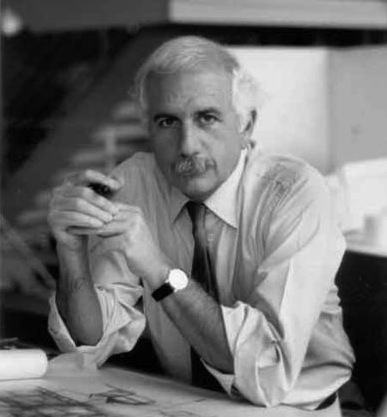During the World Architecture Festival’s closing keynote speech, Canadian-Israeli architect Moshe Safdie criticized today’s urban planning and invited attendees and the larger community to “reflect that our planning tools are no longer adequate, that the way we have planned in the past is no longer effective,” Dezeen reported.
The festival took place in Singapore's Marina Bay Sands, which Safdie designed.
“The profession needs reorientation. I also think that our understanding of what urban design is all about [needs] reorientation,” Safdie added.
The 76-year-old sees skyscrapers and the privatization of public space to be the most problematic parts of modern city design. This privatization of the public realm leads to an erosion of urban connectivity, Dezeen wrote.
“The new typology is the superblock: a cluster of high-rise buildings of mixed use, sitting on a podium which is a retail mall. That’s the dominant typology of the mixed-use downtown area across Asia, across Latin America and emerging now in every part of the world.”
Dezeen has the full story.
Related Stories
Biophilic Design | Nov 19, 2018
Biophilic design: What is it? Why it matters? And how do we use it?
As we continue to move toward the city and spend more time indoors, our day-to-day interaction with quality nature is shrinking. One contemporary concept to reverse this effect is biophilic design, a strategic approach to tap into—and harness—nature in the built environment.
Architects | Nov 6, 2018
Kohn Pedersen Fox opens three new offices
Following exciting current work, new commissions, and upcoming opportunities, global architecture firm embraces the future with new outposts.
Architects | Oct 2, 2018
Gensler, in latest report, highlights where resilient design could make the greatest impact on the built environment
The firm showcases its own recent projects as demonstrations for what can work in six areas.
Architects | Sep 24, 2018
Assembly (and rigorous planning) required: Managing the pros and cons of modular construction
While offering efficiency and flexibility, modular construction requires extensive planning and collaboration to avoid potential challenges.
Architects | Sep 19, 2018
Back it up: Parking lot trends
There are two shifts that we are seeing in parking lot planning and design – and these shifts are rooted in parking’s place at the intersection of environment, transportation, and market behavior.
Architects | Sep 14, 2018
We’ve entered the golden age of brain science. What does it mean for AEC firms?
New research from the SMPS Foundation explores the known principles and most recent research surrounding the human brain and behavioral science. The goal: to discover connections between the science and the AEC business.
Architects | Sep 6, 2018
S/L/A/M Collaborative completes merger with L.A.-based firm
The healthcare sector is one of Frank Webb Architects’ strengths.
Giants 400 | Sep 6, 2018
What's happening at 89 design firms
The latest developments at 89 of the nation's largest architecture and architecture/engineering (AE) firms.
Architects | Sep 6, 2018
Little details, big questions: Occupancy planning 101 for healthcare facilities
Transitioning into a new hospital is no easy feat and daily tasks can have a huge impact.
Architects | Aug 14, 2018
AIA takes a firmer stand on making schools safer with better design
The Institute urges the formation of a federal clearinghouse for best practices, and wants security-related design to be eligible for grants.
















